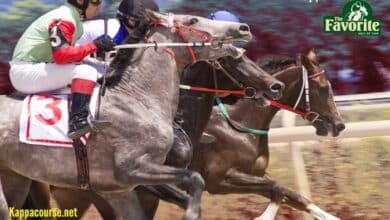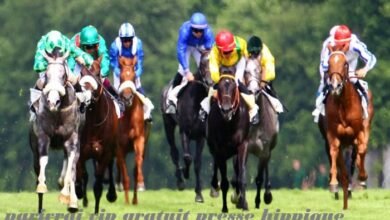The Secrets of Fréquence Turf

The world of horse racing is intricate and exciting, with various strategies and terminologies that enthusiasts must master. One such term is “fréquence turf,” which refers to the frequency of specific events or outcomes in turf horse racing. Understanding “fréquence turf” is crucial for anyone looking to enhance their betting strategies and increase their chances of winning. In this comprehensive guide, we will explore everything you need to know about “fréquence turf,” from its definition to practical applications and strategies.
What is Fréquence Turf?
“Fréquence turf” is a term used in the context of horse racing, particularly in turf races, to describe the frequency at which certain events or outcomes occur. These events can include winning horses, specific race results, and patterns that emerge over time. Understanding “fréquence turf” involves analyzing historical data and identifying trends that can inform betting decisions.
The Importance of Fréquence Turf in Horse Racing
The concept of “fréquence turf” is essential for horse racing enthusiasts and bettors. By understanding the frequency of specific outcomes, bettors can make more informed decisions and increase their chances of winning. Analyzing “fréquence turf” helps identify patterns and trends that are not immediately apparent, giving bettors a competitive edge.
Historical Data Analysis and Fréquence Turf
One of the key components of understanding “fréquence turf” is analyzing historical data. This involves looking at past race results, horse performances, and other relevant factors. By examining this data, bettors can identify trends and patterns that may repeat in future races. Historical data analysis is a crucial step in mastering “fréquence turf.”
Factors Influencing Fréquence Turf
Several factors can influence “fréquence turf,” including the condition of the turf, the weather, the horses’ form, and the jockeys’ skills. Each of these factors can significantly impact the outcome of a race and, consequently, the “fréquence turf.” Understanding how these elements interact is vital for accurate predictions and successful betting.
Strategies for Utilizing Fréquence Turf
Developing effective strategies based on “fréquence turf” involves combining various analytical approaches. Bettors can use statistical models, historical data analysis, and real-time information to make informed decisions. Strategies may include focusing on specific horses, jockeys, or conditions that historically yield favorable results.
Tools and Resources for Analyzing Fréquence Turf
Numerous tools and resources are available to help bettors analyze “fréquence turf.” These include software programs, online databases, and statistical tools that provide detailed insights into horse racing trends. Utilizing these resources can significantly enhance one’s ability to predict outcomes and make successful bets.
Case Studies: Successful Applications of Fréquence Turf
Examining case studies of successful bettors can provide valuable insights into the practical application of “fréquence turf.” By studying real-world examples, bettors can learn how to apply theoretical knowledge to actual racing scenarios, improving their betting strategies and outcomes.
Common Mistakes to Avoid with Fréquence Turf
While understanding “fréquence turf” can significantly enhance betting strategies, there are common mistakes that bettors should avoid. These include over-reliance on historical data, ignoring current conditions, and failing to adapt strategies to changing circumstances. Awareness of these pitfalls is crucial for long-term success.
The Future of Fréquence Turf in Horse Racing
The field of “fréquence turf” is continually evolving, with advancements in technology and data analysis providing new opportunities for bettors. The future of “fréquence turf” will likely see even more sophisticated tools and strategies, further enhancing the ability to predict race outcomes accurately.
Expert Opinions on Fréquence Turf
Gaining insights from experts in the field can provide a deeper understanding of “fréquence turf.” Interviews and articles from seasoned bettors, analysts, and trainers can offer valuable perspectives and tips for mastering this complex aspect of horse racing.
How to Get Started with Fréquence Turf
For beginners, getting started with “fréquence turf” can seem daunting. However, by following a structured approach, including studying historical data, using analytical tools, and learning from experts, newcomers can gradually build their knowledge and skills. Starting with small bets and progressively increasing stakes as confidence grows is a recommended strategy.
Conclusion
Understanding and utilizing “fréquence turf” is a valuable skill for anyone involved in horse racing betting. By analyzing historical data, identifying patterns, and considering various influencing factors, bettors can significantly enhance their chances of success. The future of “fréquence turf” looks promising, with advancements in technology and data analysis providing new opportunities for accurate predictions and successful betting strategies. Whether you are a seasoned bettor or a beginner, mastering “fréquence turf” can lead to more informed decisions and better outcomes in the exciting world of horse racing.
Frequently Asked Questions about Fréquence Turf
1. What is “fréquence turf”?
“Fréquence turf” refers to the frequency of specific events or outcomes in turf horse racing, which bettors analyze to inform their betting strategies.
2. How can I analyze “fréquence turf”?
Analyzing “fréquence turf” involves studying historical race data, identifying patterns, and using statistical tools to predict future outcomes.
3. What factors affect “fréquence turf”?
Factors such as turf condition, weather, horse form, and jockey skills all influence “fréquence turf” and must be considered in analysis.
4. What tools can I use to analyze “fréquence turf”?
There are various tools available, including software programs, online databases, and statistical tools, to help analyze “fréquence turf.”
5. How can beginners get started with “fréquence turf”?
Beginners should start by studying historical data, using available tools, learning from experts, and starting with small bets to build confidence.




